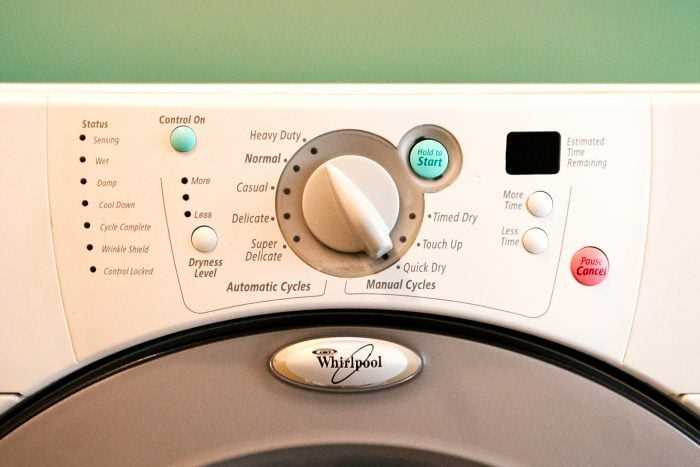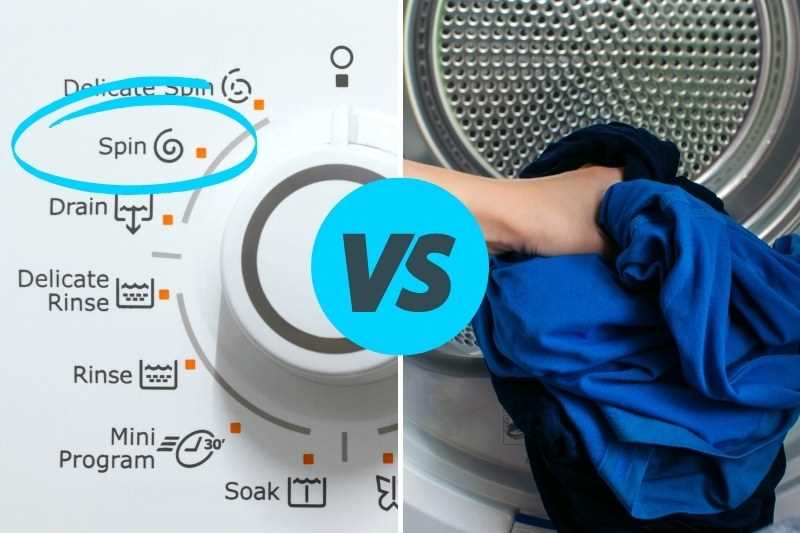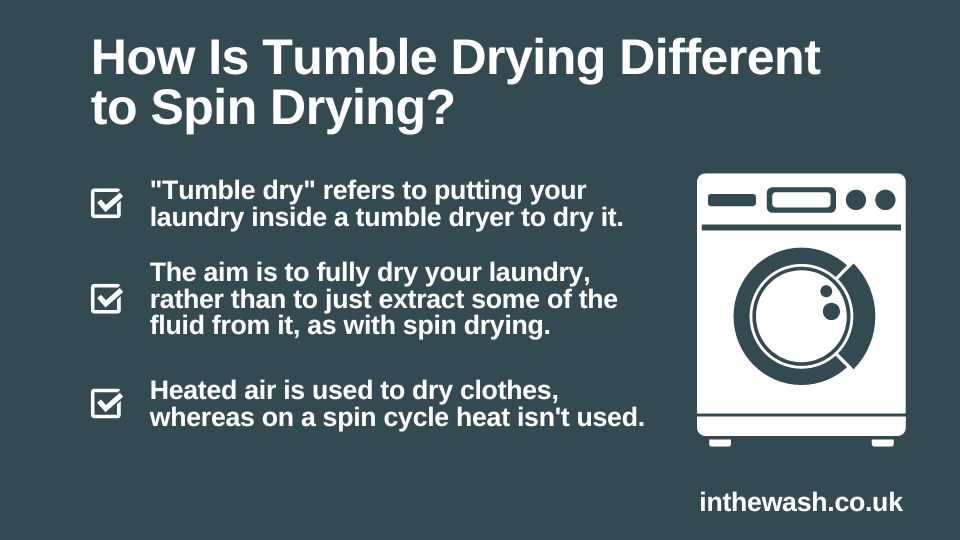




When it comes to drying your clothes, you have two main options: air drying or using a tumble dryer. Both methods have their pros and cons, and it’s important to consider which approach is best for your clothes in order to keep them in good condition.
Air drying clothes is a traditional method that involves hanging your wet laundry on a clothesline or drying rack and letting the air naturally evaporate the moisture. This method is often considered the more eco-friendly option, as it doesn’t require any electricity. It can also be gentler on delicate fabrics, as there is no heat or movement that could potentially damage or shrink your clothes.
On the other hand, tumble drying involves using a machine to rapidly dry your clothes using hot air and constant movement. This method is quick and convenient, especially for those with busy lifestyles. Tumble drying can also help to soften fabrics and reduce wrinkles, making your clothes feel and look better. However, it can be more harsh on certain fabrics and may cause shrinkage or damage in some cases.
When deciding between air drying and tumble drying, it’s important to consider factors such as time, energy usage, and the specific fabrics you are dealing with. Some clothes may be better suited for air drying, while others can handle the heat and movement of a tumble dryer. Ultimately, finding the right balance between the two methods can help to extend the lifespan of your clothes and keep them looking their best.
Remember, every fabric is different, so it’s always a good idea to check the care label on your clothing before deciding how to dry it. In some cases, you may even opt for a combination of both methods, air drying for more delicate items and using a tumble dryer for sturdier fabrics. By taking these factors into consideration, you can choose the drying method that is best for your clothes and keep them in great condition for longer.
Air Drying Clothes vs. Tumble Drying: Which is Better for Your Clothes?
Drying clothes is an essential step in the laundry process. However, there are different methods available, each with its own advantages and disadvantages. Two popular methods are air drying and tumble drying. In this article, we will compare these two methods to help you determine which is better for your clothes.
Air Drying Clothes

Air drying clothes involves letting them dry naturally without the use of any mechanical devices. This method has been used for centuries and has several advantages:
- Gentler on fabrics: Air drying clothes is typically gentler on fabrics compared to tumble drying. It helps to prevent shrinking, color fading, and damage to delicate materials.
- Energy efficient: Air drying clothes requires no electricity or gas, making it an environmentally friendly and cost-effective option.
- No risk of overheating: Since there is no heat involved, there is no risk of clothes being damaged or shrinking due to overheating.
However, air drying clothes also has some drawbacks:
- Longer drying time: Air drying clothes can take longer compared to tumble drying, especially in humid or cold weather conditions.
- Weather-dependent: Air drying is greatly affected by weather conditions. Rain, high humidity, or extreme temperatures can delay the drying process.
- Stiffness: Air dried clothes tend to be stiffer compared to clothes dried in a tumble dryer. This can be mitigated by giving them a good shake before hanging them to dry.
Tumble Drying
Tumble drying involves using a machine that tumbles clothes in hot air to remove moisture quickly. Here are some advantages of tumble drying:
- Saves time: Tumble drying is quicker compared to air drying. It can dry clothes in a fraction of the time, especially in warm and dry conditions.
- Softer and fluffier clothes: Tumble drying can leave clothes feeling softer and fluffier compared to air drying.
- Convenience: Tumble drying is convenient as it allows you to dry clothes at any time, regardless of the weather conditions.
However, tumble drying also has some downsides:
- Potential damage to fabrics: The heat and tumbling action of the dryer can damage certain fabrics, causing shrinkage, fading, or wrinkling.
- Energy consumption: Tumble drying requires electricity or gas to operate, making it less environmentally friendly and potentially more costly.
- Special care for delicate items: Some delicate fabrics or items may not be suitable for tumble drying and require air drying instead.
Conclusion

The choice between air drying and tumble drying depends on various factors such as fabric type, weather conditions, time constraints, and personal preferences. Air drying is generally recommended for delicate fabrics and for those looking to save on energy consumption. On the other hand, tumble drying offers convenience and quicker drying, but may not be suitable for all fabrics. It’s important to consider these factors and choose the method that best suits your needs and clothing items.
Air Drying Clothes: Benefits and Considerations
Drying clothes by air is a natural and energy-efficient option that many people prefer over tumble drying. Here are some benefits and considerations of air drying clothes:
Benefits:
- Energy efficiency: Air drying clothes requires no electricity or gas, making it an environmentally friendly option.
- Cost savings: By air drying clothes, you can save on your energy bills since you are not using a dryer.
- Prolongs clothing lifespan: Tumble drying can cause wear and tear on clothes due to the heat and tumbling action. Air drying helps to preserve the quality and lifespan of your garments.
- Reduced shrinkage: Certain fabrics, such as cotton, can shrink when exposed to high heat. Air drying eliminates this risk.
- Natural freshness: Clothes dried outdoors tend to have a natural, fresh scent that cannot be replicated by any dryer sheet or fabric softener.
Considerations:
- Time-consuming: Air drying clothes can take longer than using a dryer, particularly in humid or cold climates. Ensure you have enough time to allow for drying.
- Weather-dependent: Air drying is highly dependent on weather conditions. Rainy or humid weather can prolong drying time and may not be suitable for air drying.
- Space requirement: You need adequate space for hanging clothes or setting up drying racks. Consider whether you have enough room indoors or outdoors.
- Stiffness: Clothes dried by air can feel slightly stiffer compared to those dried in a dryer. However, this can be addressed by gently shaking or fluffing the clothes after drying.
- Crinkling: Some fabrics, such as silk or delicate items, may wrinkle or crease more when air dried. Check the care label on your clothes for any specific drying instructions.
In conclusion, air drying clothes offers numerous benefits, including energy efficiency, cost savings, and prolonging the lifespan of your garments. However, it is important to consider the time, space, and weather conditions before choosing to air dry your clothes.
Tumble Drying: Pros and Cons
Pros
- Convenience: Tumble drying is incredibly convenient, especially for busy individuals or those who have limited space to air dry their clothes. With a tumble dryer, you can quickly dry your clothes without having to wait for them to air dry.
- Time-saving: Tumble drying significantly reduces the drying time compared to air drying. This is especially beneficial for larger or thicker clothing items that may take a long time to air dry.
- Reduced wrinkles and creases: Tumble dryers often have settings or features that help reduce wrinkles and creases in your clothes. This can save you time and effort in ironing or steaming your garments after drying.
- Softness: Tumble drying can make your clothes feel softer compared to air drying. The tumbling action helps to fluff up the fibers in your clothes, giving them a more comfortable and cozy feel.
Cons
- Potential damage to clothes: Tumble drying can potentially damage certain types of clothing, especially delicate fabrics or garments with embellishments. The high heat and tumbling action can cause shrinkage, fading, or even tears in more fragile items.
- Energy consumption: Tumble dryers can be energy-intensive appliances, especially older models. Running a tumble dryer frequently can significantly increase your energy bills.
- Environmental impact: As a result of their energy consumption, tumble dryers can contribute to carbon emissions and have a negative impact on the environment. Air drying, on the other hand, is a more eco-friendly option.
- Potential for static cling: Tumble drying can sometimes lead to static cling in your clothes, especially during dry and colder months. This can be frustrating and require additional steps, such as using dryer sheets, to mitigate the issue.
When deciding whether to air dry or tumble dry your clothes, it’s important to weigh the pros and cons based on your specific needs and circumstances. Consider factors such as convenience, time constraints, fabric types, and the environmental impact to make the best choice for your clothes and overall lifestyle.
Impact on Clothing Longevity
One important consideration when debating between air drying clothes and tumble drying is the impact on clothing longevity. The way you dry your clothes can affect their overall lifespan and condition.
When it comes to air drying clothes, the gentle process of letting your garments dry naturally can contribute to their longevity. Air drying minimizes the wear and tear caused by heat and mechanical action in the tumble dryer. It prevents shrinkage, fading, and damage to delicate fabrics. By avoiding the high heat and tumbling motion, your clothes are less likely to suffer from color loss, fabric distortion, and weakening of fibers.
Tumble drying, on the other hand, can have a negative impact on the longevity of your clothes. The high heat and vigorous tumbling action can cause fabrics to shrink, lose their shape, and wear out faster. Additionally, the friction caused by the clothes rubbing against each other in the dryer can lead to pilling and fabric damage.
To further illustrate the impact on clothing longevity, consider the following:
- Air drying can help preserve the color and texture of delicate fabrics like silk and wool, allowing them to last longer in good condition.
- Tumble drying jeans and other heavy fabrics can cause them to lose shape and fade over time.
- The repetitive nature of tumbling can weaken the fibers of clothing, making them more prone to tears and holes.
- Air drying is a preferred method for clothes with embellishments, as the tumbling motion in the dryer can damage or detach decorative elements.
In conclusion, air drying clothes generally has a positive impact on clothing longevity compared to tumble drying. It helps preserve the color, shape, and overall condition of your garments, especially delicate fabrics. By opting for air drying, you can extend the lifespan of your clothes and reduce the need for frequent replacements.
Energy Efficiency Comparison
When it comes to energy efficiency, air drying clothes is the clear winner. Tumble drying clothes consumes a significant amount of energy, as it requires electricity to run the machine and heat the air inside.
Air drying, on the other hand, relies on natural elements such as sun and wind to dry the clothes, requiring no electricity. This makes it a more environmentally friendly and cost-effective option.
Energy Consumption

Tumble dryers are known to be energy-intensive appliances. On average, a typical household tumble dryer uses around 2,800 to 5,000 watts per hour. This high energy consumption can contribute to increased energy bills and also puts a strain on the environment.
In contrast, air drying clothes consumes zero energy, making it the most energy-efficient drying method. By utilizing natural resources, you can significantly reduce your carbon footprint and contribute to a greener planet.
Environmental Impact
The energy consumption of tumble dryers has a direct impact on the environment. The electricity used to operate these machines is often generated from non-renewable sources, such as coal or natural gas, which release greenhouse gases when burned.
By opting for air drying, you can eliminate the emissions associated with electricity generation and reduce your household’s overall carbon emissions. This small change in your laundry routine can have a positive impact on climate change and help preserve the environment for future generations.
Cost Savings

Tumble drying clothes can significantly increase your energy bills. On average, using a tumble dryer costs around $0.30 to $0.40 per hour, depending on the energy rates in your area.
By air drying your clothes, you can save money on your monthly energy bills. In addition, air drying also helps preserve the lifespan of your clothes, reducing the need for frequent replacements and saving you money in the long run.
Conclusion
When considering the energy efficiency of drying clothes, air drying is undeniably the better option. It consumes no energy, reduces environmental impact, and helps save money. By making a simple switch to air drying, you can make a significant contribution to energy conservation and sustainability.
Factors to Consider When Choosing a Drying Method

When it comes to drying your clothes, there are several factors to consider that can help you determine which method is better for your clothes:
- Fabric type: Different fabrics require different drying methods. Delicate fabrics like silk or wool may need to be air dried to avoid damage, while more durable fabrics like cotton or polyester can usually withstand tumble drying.
- Drying time: Air drying typically takes longer than tumble drying. If you need your clothes to dry quickly, tumble drying may be the better option. However, if you have the time and want to save energy, air drying can be a convenient and cost-effective choice.
- Energy consumption: Tumble drying requires electricity or gas, resulting in higher energy consumption. On the other hand, air drying is an eco-friendly option that can help reduce your carbon footprint.
- Space availability: Air drying requires enough space to hang or lay out your clothes, which may not be feasible in small apartments or during the winter season. Tumble drying, on the other hand, only requires a dryer and takes up less space.
- Clothing care: Tumble drying can be harsh on certain garments, causing shrinkage or damage. If you have delicate or expensive clothing items, air drying may help maintain their quality and prolong their lifespan.
In conclusion, the choice between air drying and tumble drying depends on your specific circumstances and priorities. Considering factors such as fabric type, drying time, energy consumption, space availability, and clothing care can help guide you towards the best drying method for your clothes.
FAQ
Is air drying clothes better for the environment?
Air drying clothes is definitely better for the environment because it doesn’t require any energy consumption. Tumble drying, on the other hand, uses a significant amount of electricity, contributing to carbon emissions and increasing your carbon footprint.
Which method is gentler on clothes?
Air drying is generally considered gentler on clothes compared to tumble drying. The high heat and mechanical action of a tumble dryer can cause fabrics to shrink, fade, and lose their softness. Air drying, on the other hand, allows clothes to dry naturally without subjecting them to any harsh conditions.
Does tumble drying shrink clothes?
Yes, tumble drying can cause clothes to shrink, especially if they are made of natural fibers like cotton or wool. The high heat and tumbling action can cause the fibers to contract, resulting in a smaller size. It is always best to check the care label on your clothes before tumble drying them.
Does air drying clothes take longer?
Yes, air drying clothes does take longer compared to using a tumble dryer. The drying time can vary depending on the weather conditions, humidity levels, and airflow. It usually takes a few hours to a full day for clothes to air dry completely, whereas a tumble dryer can dry clothes in a matter of minutes.
Which method is more cost-effective?
Air drying clothes is more cost-effective in the long run. While tumble drying may seem convenient, it consumes a significant amount of electricity, contributing to higher utility bills. Air drying, on the other hand, requires no energy consumption and is completely free. It may take longer, but it can save you money in the long term.













